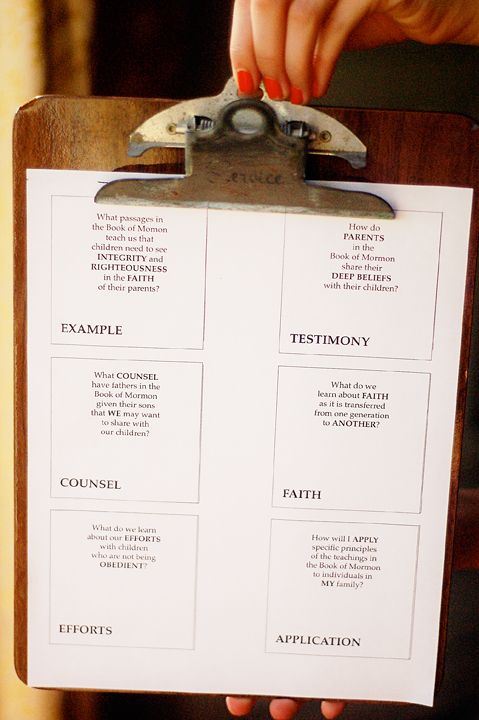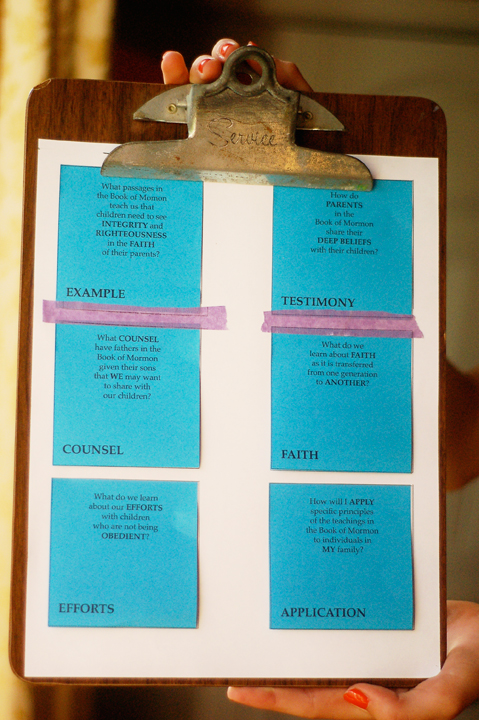This was a guest post I shared on Jocelyn’s blog, We Talk of Christ, We Rejoice in Christ, back in October. A reader is using this for a Christmas gift, and asked that it be reposted – so here it is again!
 The October 2011 Ensign is a special issue all about the Book of Mormon. There are many inspiring articles, but I was particularly drawn to what was written about the Book of Mormon and families. It is really interesting to think about the families around which the Book of Mormon was written: Lehi and Sariah, Nephi and his brothers which included Jacob, who was the father of Enos. Then there was Mosiah and Ammon, and Alma and Alma the younger, and then Helaman. Of course there was Mormon and Moroni, and there is a special place in my heart for the Stripling Warriors and their mothers. There are more family relationships than those mentioned here, and it will be a great journey to take the following challenge of Elder Neil L. Anderson:
The October 2011 Ensign is a special issue all about the Book of Mormon. There are many inspiring articles, but I was particularly drawn to what was written about the Book of Mormon and families. It is really interesting to think about the families around which the Book of Mormon was written: Lehi and Sariah, Nephi and his brothers which included Jacob, who was the father of Enos. Then there was Mosiah and Ammon, and Alma and Alma the younger, and then Helaman. Of course there was Mormon and Moroni, and there is a special place in my heart for the Stripling Warriors and their mothers. There are more family relationships than those mentioned here, and it will be a great journey to take the following challenge of Elder Neil L. Anderson:
I would invite you to ponder these questions to help you liken the teachings of the Book of Mormon to your family:
• What passages in the Book of Mormon teach us that children need to see integrity and righteousness in the faith of their parents?
• What counsel have fathers in the Book of Mormon given their sons that we may want to share with our children?
• What do we learn about our efforts with children who are not being obedient?
• How do parents in the Book of Mormon share their deep beliefs with their children?
• What do we learn about faith as it is transferred from one generation to another?
 I put together this study notebook to help me research and ponder the questions above. I printed each question on a sticky note and placed it in the notebook as a sort of tabbed chapter heading. You could place them with as many pages in between as you think you may need.
I put together this study notebook to help me research and ponder the questions above. I printed each question on a sticky note and placed it in the notebook as a sort of tabbed chapter heading. You could place them with as many pages in between as you think you may need.
 This is a 70-page notebook so I will probably put my chapters about 10 pages apart. That will give me a little extra for the last chapter which has a title that I added in myself:
This is a 70-page notebook so I will probably put my chapters about 10 pages apart. That will give me a little extra for the last chapter which has a title that I added in myself:
APPLICATION: How will I APPLY specific principles of the teachings in the Book of Mormon to individuals in MY family?
As ideas come during my scripture study that are applicable to members of my family, I can jot them down there at the end.
 To print on the sticky notes, begin by printing the downloadable file at the bottom of this post. This is the 2nd page of the file.
To print on the sticky notes, begin by printing the downloadable file at the bottom of this post. This is the 2nd page of the file.
 Then place 3 x 3″ sticky notes on top of the printed squares and run through your printer again using the manual feed tray. Be sure to only print page 2 of the document, and to put your paper in upside down so the sticky end of the post it goes through first. I used a couple pieces of masking tape on the first sticky notes to run through, because my printer was having a hard time getting that top part to go in.
Then place 3 x 3″ sticky notes on top of the printed squares and run through your printer again using the manual feed tray. Be sure to only print page 2 of the document, and to put your paper in upside down so the sticky end of the post it goes through first. I used a couple pieces of masking tape on the first sticky notes to run through, because my printer was having a hard time getting that top part to go in.
I hope this project inspires you to liken the teachings in the Book of Mormon to your family!
You can find the downloadable file below:

This is a great idea. I have been scheming things to help my family a little more in the scripture department. I think I’ll use it for the FHE lesson when its my turn for the first 6 months of the year! Then maybe we can do a refresher or 2nd look for the next 6 months.
Exelente!!! …..La información que comparten aquí es de mucha ayuda, que bueno que existan personas como Uds. con tanta imaginación para crear herramientas que nos ayudarán en la obra de Nuestro Padre Celestial….Personalmente a mi me está ayudando un montón….quisiera pedirles por favor ( si es posible) que siempre coloquen una versión en español para poder bajar los archivos, lo está haciendo y es fabuloso, pero The Book of Mormon: Framed within Families…no tiene la opción…
gracias!!!!!!!!!!!
FELICDADES
Whoa! What a tool. Great job and thank you very much. I’m looking forward to a great year of studying and also sharing with parents and primary teachers this year (2014).